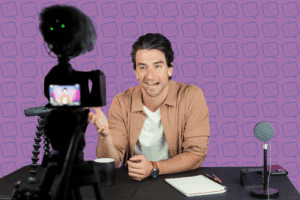Answering Your FAQs About FTC Disclosures

Influencer marketing has become a popular way for brands to reach their target audience through social media platforms. However, with this popularity comes the need for proper disclosure to ensure transparency and compliance with regulations set forth by the Federal Trade Commission (FTC). As an influencer, it can be confusing to understand what is required for FTC disclosures and how to properly implement them. In this blog post, we will answer some frequently asked questions about FTC disclosures for influencers to help you navigate this important aspect of your content creation.
Why can’t I just say this video is sponsored at the beginning or end of the video?
The FTC guidelines state that influencers need to make sure people will see and understand the disclosure so the proximity of the disclosure and integration is really important. Think about it this way – do you ever skip the intro or outro of videos? You most likely answered yes. If you don’t have a disclosure immediately before the sponsored portion it’s likely that someone will skip past the disclosure and they wouldn’t know it’s actually sponsored.
Why do I have to have my link and disclosure in the first line of the video description?
The FTC guidelines state that disclosures need to be placed so they are hard to miss and since most people won’t click the “see more” button in a description box, the link and disclosure need to be visible without having to click that button.
Doesn’t a link and disclosure in the description box affect SEO?
The short answer is no, having a disclosure in your description box doesn’t negatively impact the SEO of your video. In fact, all paid promotions need to follow Google Ads policies and YouTube’s Community Guidelines, so if you don’t include a disclosure, you’d actually be violating these policies, which could result in your content being blocked or your account being suspended.
Think about it this way – if all the biggest influencers on YouTube have a disclosure every single time, and the algorithm suppresses content with disclosures, why is their content still being favored?
Why do I need a disclosure if I already use the paid promotion box feature?
The FTC guidelines state to not “assume that a platform’s disclosure tool is good enough, but consider using it in addition to your own, good disclosure.” This is because the paid promotion box could easily be missed since it only appears briefly in a video and may not coincide with the sponsored portion of the video.
Why do I need to say “sponsored” if I work on an affiliate basis?
The FTC guidelines say that disclosures need to use simple and clear language. Since most consumers understand that “sponsored” means the influencer is being compensated and consumers and less likely to understand what an affiliate is, most brands prefer that influencers use “sponsored” as a disclosure. It is important to remember that brands must also comply with FTC guidelines, so there may be differences between brands and their preferred disclosures.
Was this helpful? Still have questions? We’d love to help answer your questions! Reach out to us at compliance@influencelogic.com





